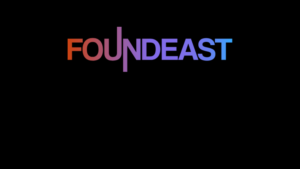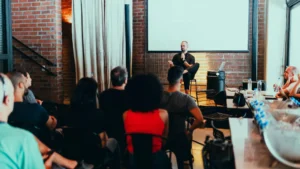If there was a book titled “The Giant List of Copywriting Strategies,” you could guarantee urgency would be near the top.
It’s one of the most tried and true advertising techniques in the history of mankind.
Why? Because it works. And really damn well at that.
Yet, at the same time, it’s subtle; just like a fox that you never see but you know is there.
Don’t write another word of copy until you know how to use urgency effectively. Which, by the way, you’ll learn ahead.
What is urgency in copywriting?
Imagine the following scenarios.
I’m selling you a brand new sneaker(or whatever your favorite thing is.)
I have dozens of pairs in the first scenario. You probably wouldn’t be in too much of a rush to buy because there’s plenty to go around, right?
Well, what if I only have a few left? Since there’s a degree of scarcity, you may feel like more urgent to make a purchase or else you’ll miss out.
That’s urgency.
Or–as defined by our friend Google–”importance requiring swift action.”
It’s a subtle but insanely effective technique that helps generate higher conversions and sales.
Why is it so effective you ask? Let me tell you.
Why is urgency so effective?
Despite humans being so advanced, we still have a “reptile” brain as some scientists call it.
That means many of our actions and decisions are based purely on primal and emotional reasoning.
Urgency, as you can guess, creates a very powerful combination of these emotions.
One in specific is fear. This feeling is created in the part of the brain called the amygdala as you can see here:
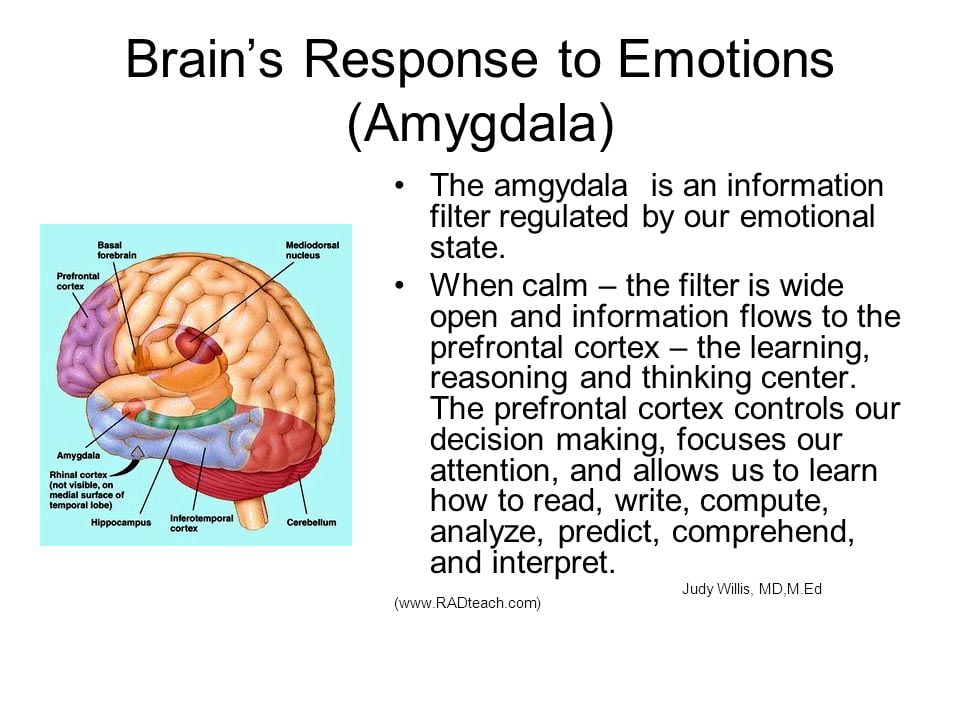
It’s perhaps the greatest and most common emotion humans experience. Hence why copywriters love it 😉
You also have to keep in mind one fundamental aspect of advertising: buying something is emotional.
Let me ask you this…
Why does someone buy a brand new BMW?
Is it because of the great gas mileage and heated seats?
Heck no!
It’s because they want to hear the loud engine, become admired, and look successful.
All of the reasons and more are based on emotions. Sure, they might rationalize why they’re buying such a product, but the reason is often emotionally driven.
Understanding this core concept will help you use urgency with its full potential.
How to use urgency in copywriting
Alright. You know what urgency is; now it’s time to learn how to use it.
These are some strategies you can begin implementing into your next copywriting project to leverage urgency.
Check them out. 👇
1. It all starts in the headline
What’s the first thing a reader sees with a piece of copy?
The headline!
That’s why you need to be meticulous with crafting headlines like an evil scientist in a laboratory.
The headline will draw the reader in to consume the rest of the copy but it’s also an excellent opportunity to create urgency.
Doing so also sets the tone for the remaining copy as it’s the first idea they register about the writing.
Check out these ads Obama used to run for office in 2012 to see what I mean:
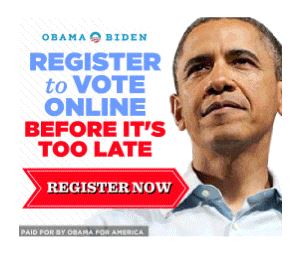
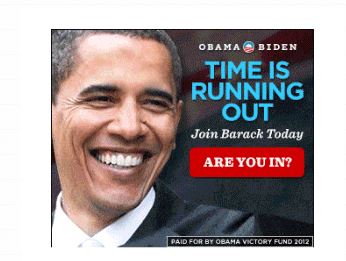
Both of them use urgency in their titles to push people to go vote. If the President of the free world uses urgency, you need to, as well.
Make sure to read my guide to headline copywriting on that note.
2. Use power words that imply scarcity and action
Every word has an image, emotion, and deeper meaning attached to it.
That’s why there are cases where a single word is changed in a piece of copy and conversion rates jump like a trampoline.
It’s also the reason you need to carefully select words like a surgeon does with her tools.
Check out this ad for the U.S. Army to see what I mean:
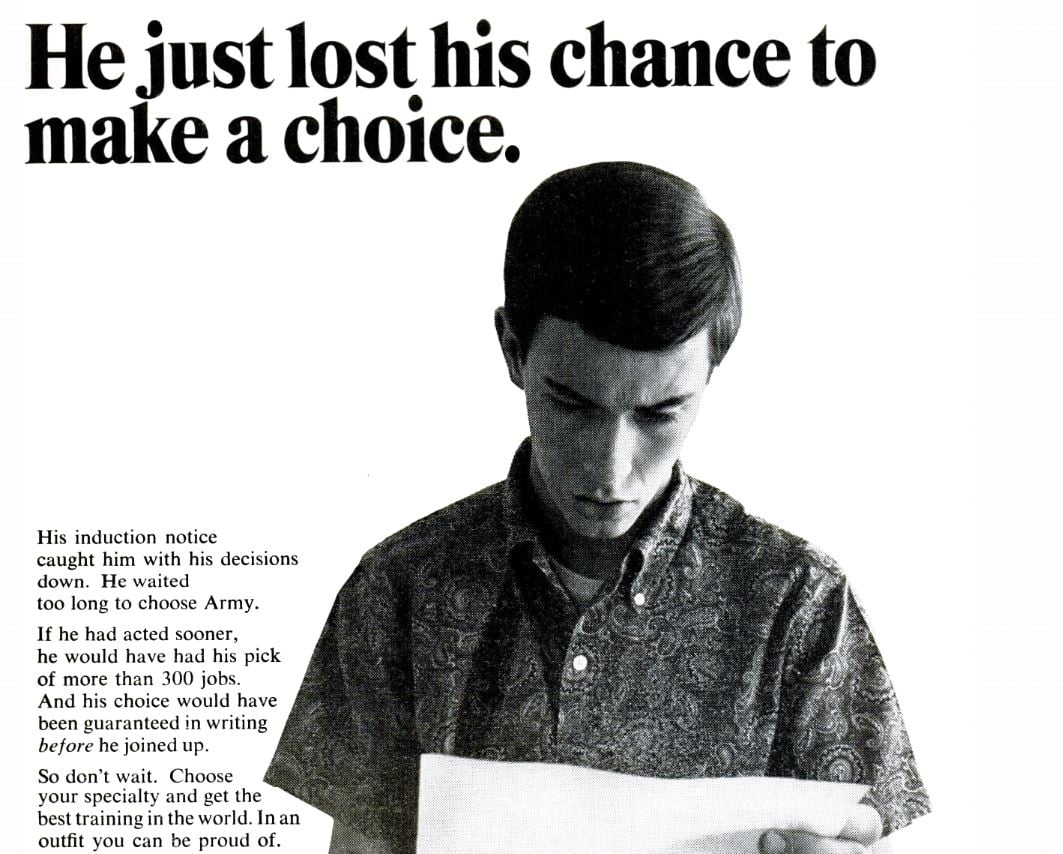
From the headline to the body, the ad uses words like:
- Lost
- Chance
- Make a choice
- Waited too long
- Acted sooner
- Before
- Don’t wait
- Get the best
All of which create a feeling that the boy in the story missed out big time. That feeling then transfers over to the reader if they’re interesting in joining the military themselves.
3. Display low inventory warnings
E-commerce is a giant industry. As a matter of fact, e-commerce sales are expected to reach $4.9 trillion globally by 2021!
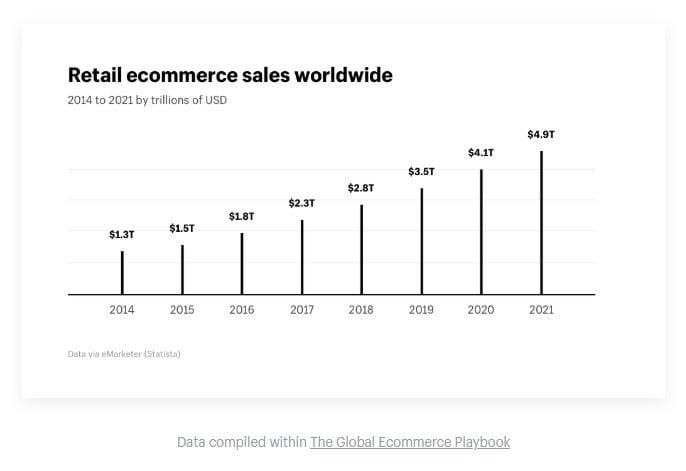
It’s also one of the best industries to use copywriting strategies like urgency.
This is because there are so many interactions that can lead to actions like purchasing on a online storefront.
All of these are opportunities for copywriters.
One of which is using low inventory warnings to make customers rush for their credit cards.
Look at this product page for a wooden lock box:
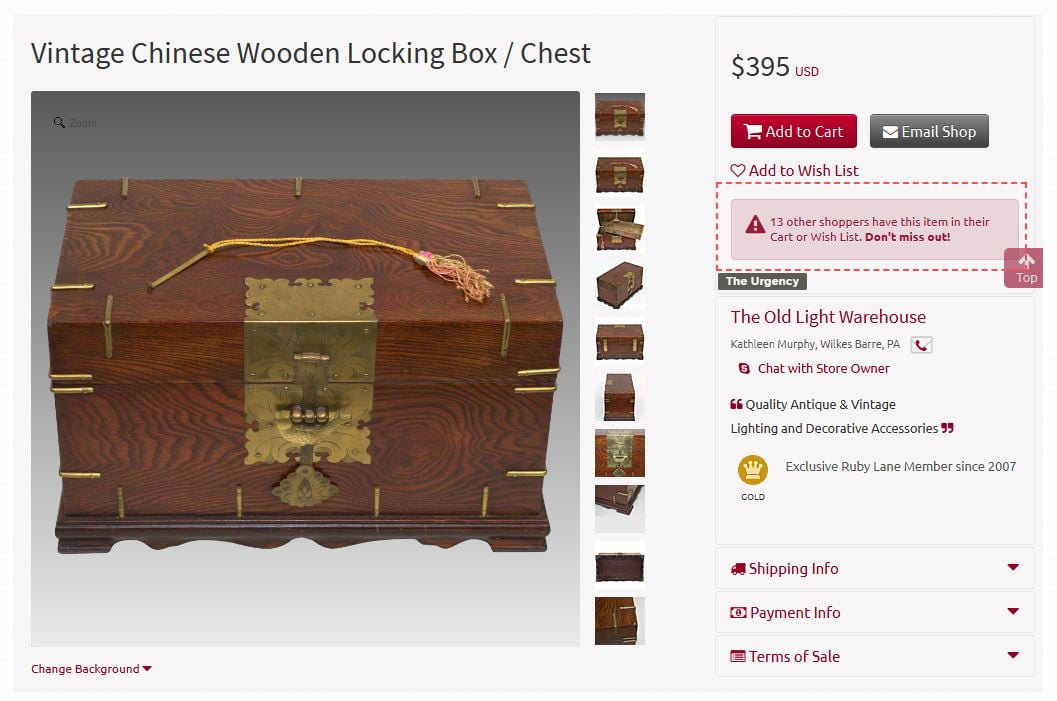
A red highlighted warning reads “13 other shoppers have this item in their Cart of Wish List. Don’t miss out!”
A.K.A the perfect urgent message combined with a call to action.
Genius. 🤓
This will make customers more likely to add the product to their cart in fear those 13 other shoppers will buy it first.
You can use other similar messages such as:
- “Only X left in inventory. Buy before we’re out of stock.”
- “We will be out of stock soon. Buy now.”
- “Stock left: X”
That brings me to my next point.
4. Take advantage of limited time offers
If you see a coupon that lasts a lifetime, you’ll be in no rush to use it.
But, if that same coupon only lasted a day, you’ll be zipping around that store to find something to buy.
That’s why limited time offers are so powerful. And, who better than Amazon to school us on how to use them?
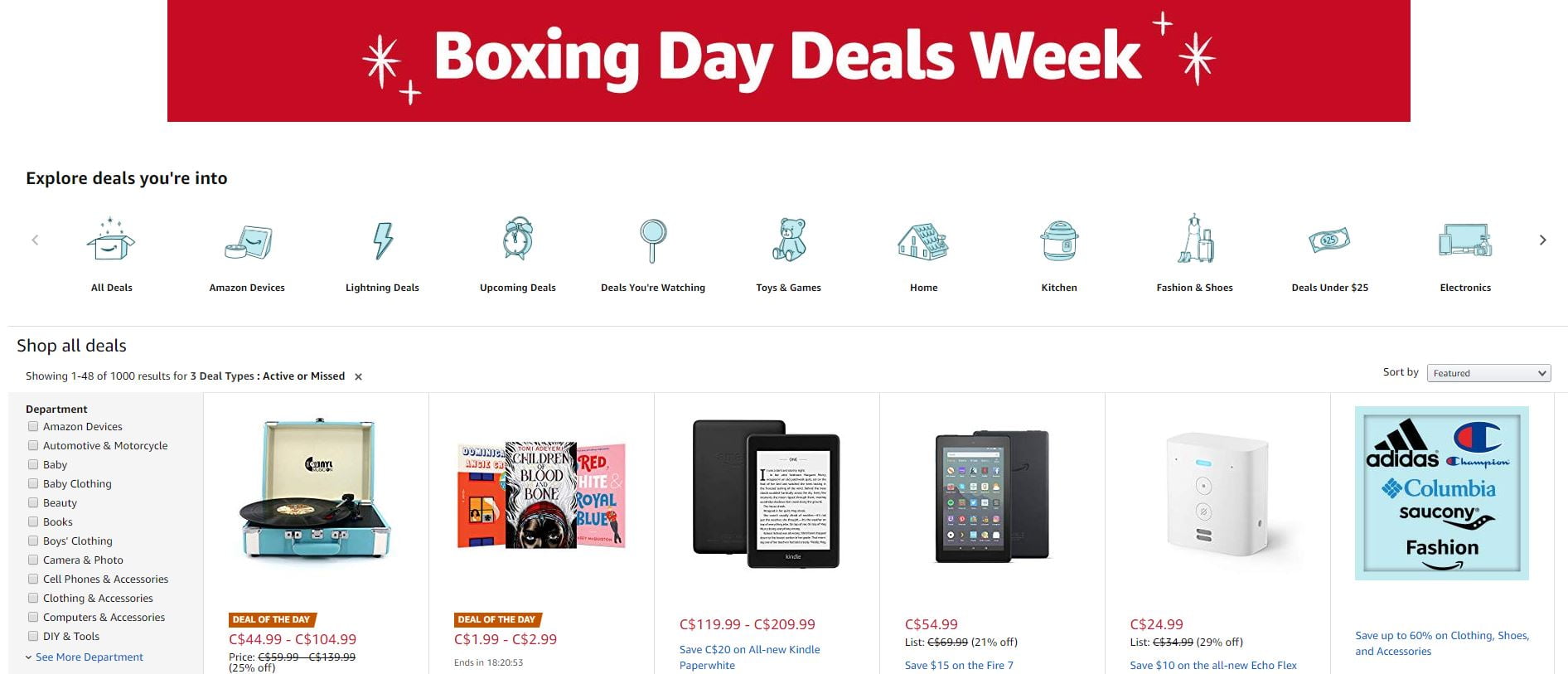
Their Boxing Day deals week is advertised through a giant red banner on the top of the page. Nobody is missing that. 👀
Additionally, all of these great deals only last the week of Boxing Day.
This creates FOMO, or fear of missing out. It’s a psychological phenomenon in which people believe they won’t be able to find a similar opportunity.
Or, as Nick Hobson Ph.D, put it, “It’s prevalent especially among young adults in Western society. And while fear of missing out has always been there, the explosion of social media has launched our young people headfirst into the FOMO experience. Now we have the ability (or curse) to easily see what all our peers are doing all the time. There’s no escaping it, really.”
I’d also like to point out that all of the prices on the Amazon Boxing Day deals page are slashed, further displaying the savings.
Copywriters can use FOMO to drive more revenue by first creating a limited time offer and clearly displaying it.
This is normally done in the form of a banner, popup, or newsletter.
The headline and text needs to be bold and in-your-face like Amazon’s, as well. Colors like orange and red grab attention and promote action.
Next, define when the deal will end. Is it 24 hours? Three days? Let customers know the time frame they have to take action.
I suggest using phrases, such as:
- “50% Off All Products Until Jan 1st. Don’t Miss Out!”
- “Get 25% Off on Easter Sunday With EASTER25 – Only Available on Easter.”
- “Free Consultations All Through March. Schedule Now Before They’re All Booked.”
No matter how great your offer is, not everyone will take action right away. They might need an extra ping before they leave which brings me to strategy #5.
5. Create an exit-intent offer
An exit intent offer is one which only appears when a customer is about to leave your website.
It’s a last-ditch effort to prevent sales from falling through the cracks.
Take the consultancy Fastrack, for instance. They focus on helping hospitality and travel companies generate bookings.
The Lead SEO Consultant, Oliver Braithwaite, uses popups on client websites because:
- It allows clients to capture more visitors.
- It saves users from abandoning the website without taking action.
- It delivers a helpful and relevant message; the best booking deals in Oliver’s case.
He implemented an exit-extent popup offer driven through urgency on the Big4 travel website which looked like this:
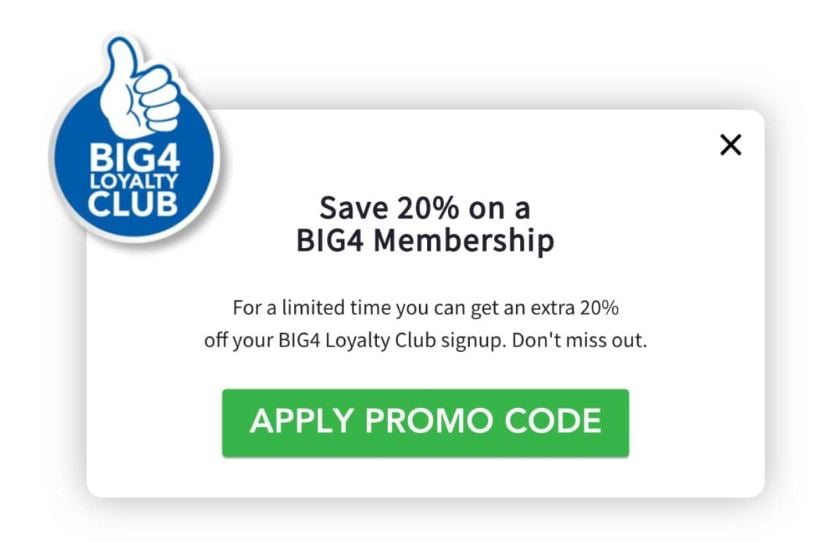
It immediately had a 50% conversion rate–and more importantly–53% of users leaving the website took the offer!
Note how the popup reads “For a limited time you can get an extra 20% off” and “Don’t miss out.”
Both of which create a sense of urgency.
You can create an exit-intent offer with tools like OptinMonster. These easily integrate with your website and provide all of the tools to create these type of campaigns in minutes.
Watch this video to learn more about their crazy technology:
6. Let them know what they’re missing out on
It’s not enough to say “Don’t miss out.”
What are the customers going to miss out on? Why is it so important? Can they get it elsewhere?
You need to be specific if you want to create the greatest degree of urgency and action.
Check out this landing page for a ClickFunnels webinar:
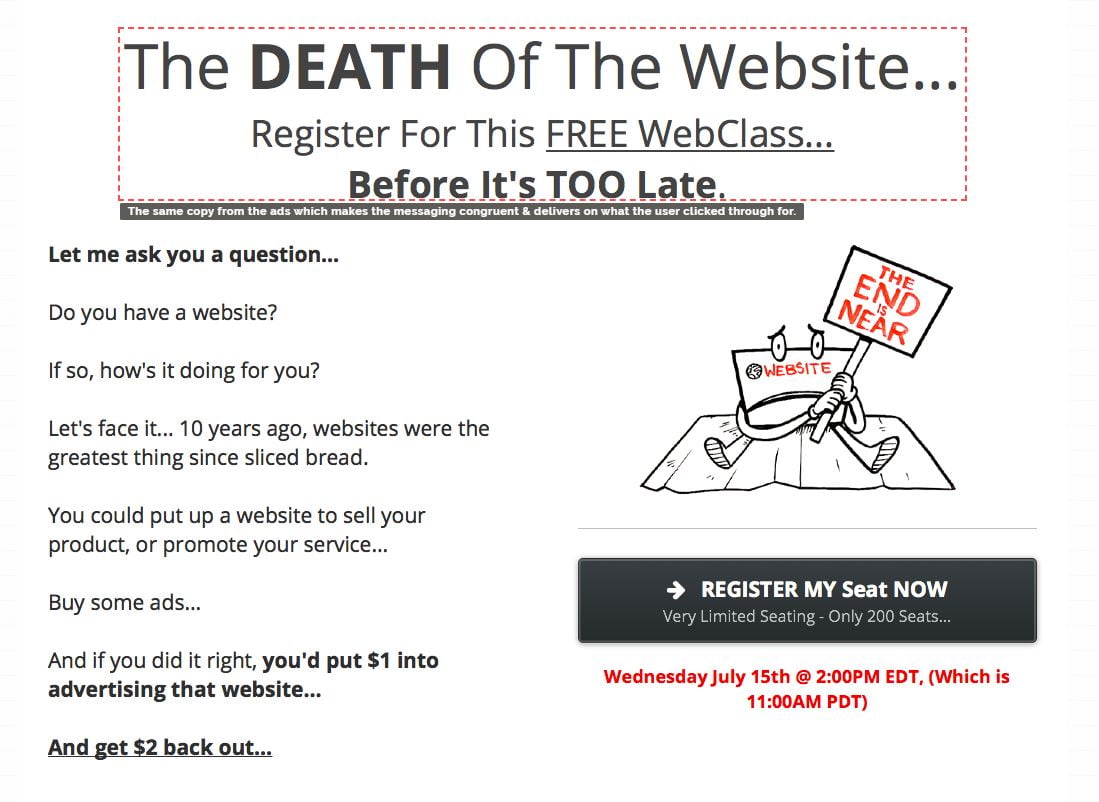
This offer was for an online class that teaches attendees about how sales funnels are better than websites.
The headline instantly grabs your attention and makes marketers worry if their website won’t stand the test of time.
Then, the real kicker is “Before It’s TOO Late.” which is enough to make any marketer to shake in panic.
It then leads to the following section explaining why the reader should care:
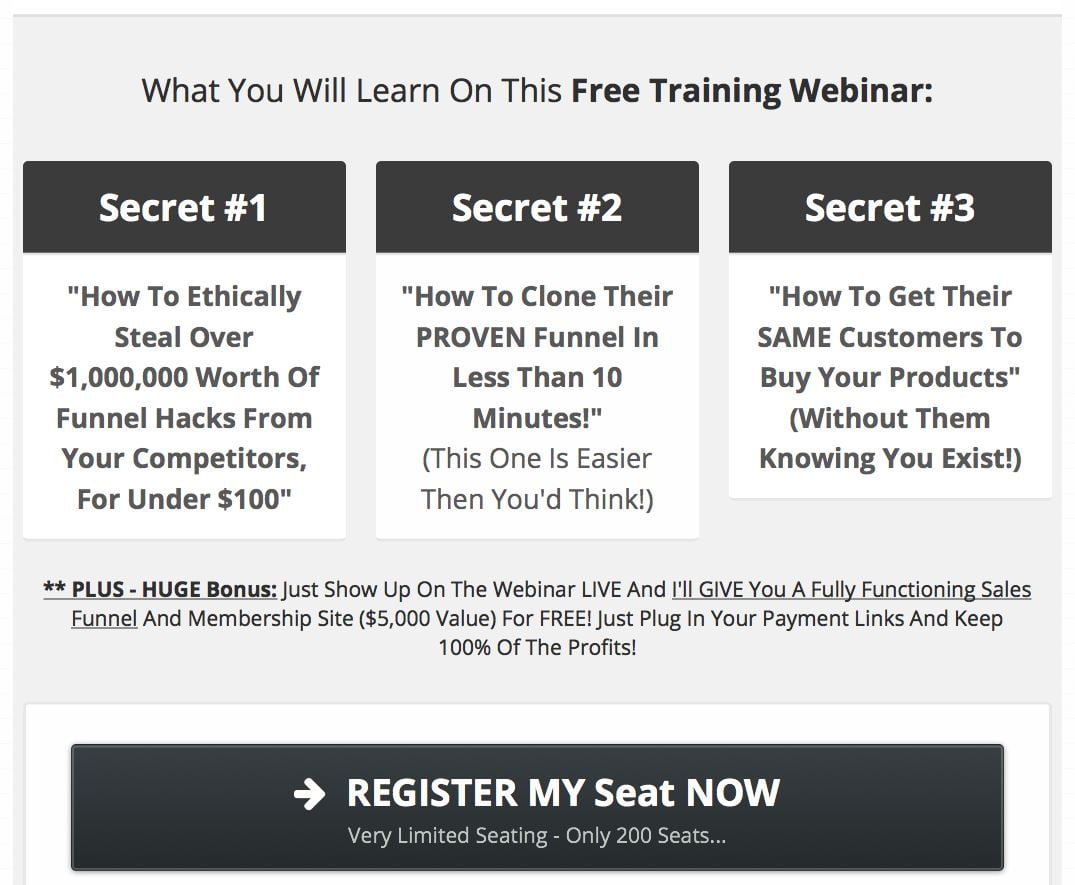
Readers will learn the secrets to stealing funnels from competitors, cloning them, and getting customers.
You should do the same by always following up any urgent message with what the customer is missing out on.
On something like a landing page, this is easy. You have up to thousands of words to explain in vast detail what’s so urgent.
However, it isn’t always so simple.
Some times you have to sum up the offer in a few sentences or less.
In those cases, use power words like I taught you previously in today’s article. Similarly, cite specific numbers like cost savings, for instance.
Make the most powerful message in the shortest amount of time when is those circumstances.
Wrapping up urgent copywriting
Copywriting is an art.
Writing a piece of sales copy that converts and makes customers excited to purchase a product in no easy feat.
You have to be the Leonardo Da Vinci of writing to do so.
Think of each paint stroke as a line of text or strategy. One of which is urgency.
This technique takes advantage of the human emotion fear. Nobody wants to miss out on something great, right?
Explaining to customers that they need to take action before it’s too late is a proven method for driving sales.
And it all begins with the headline. Use urgent words like “Limited Time, “Secret,” or “Never Seen Before” to increase click-throughs.
Then, use similar wording to brand the offer as if it won’;t be around forever.
Better yet, create a limited time offer like a holiday special so customers are forced to take action. Displaying low stock levels is another way to pull this off if you sell physical products.
But, not everyone will take the bait—which is why creating an urgent exit-intent popup prevents customers from abandoning. Make sure to–once again–offer a deal for a limited time frame.
And, always, always, always be specific. What are they missing out on exactly? State the exact dollar amount, strategies, or emotions they won’t gain by leaving.
I know that’s a lot to take. So, go for a walk and take a breather.
But, don’t be lazy! Reference all of the strategies you learned today and apply them to your next copywriting gig.


